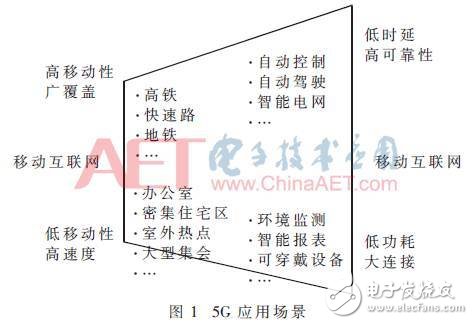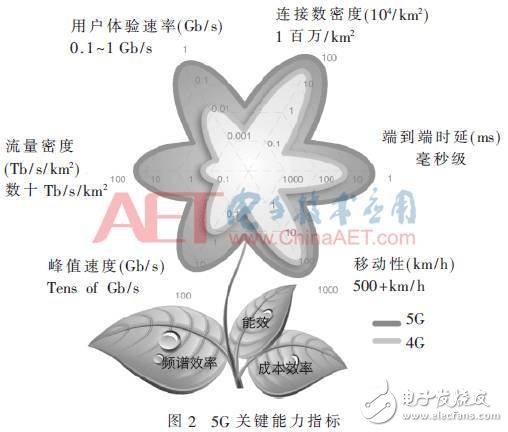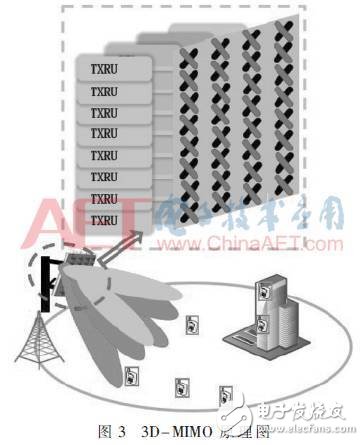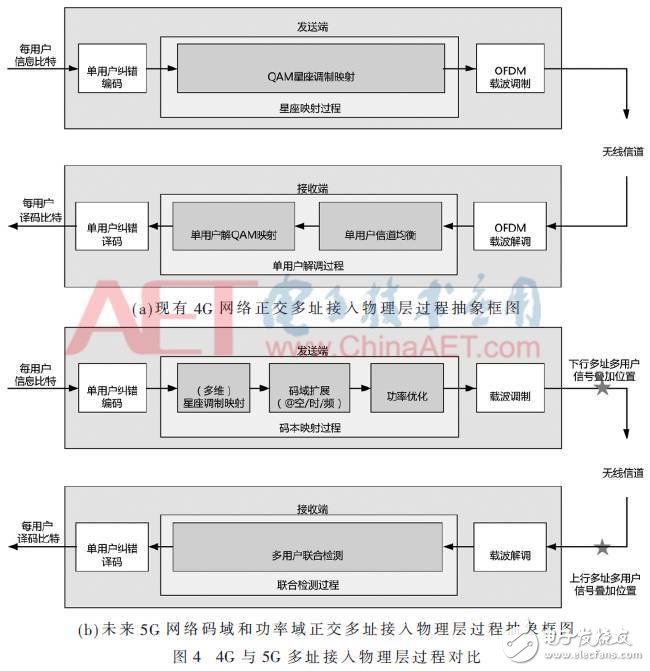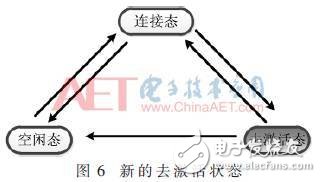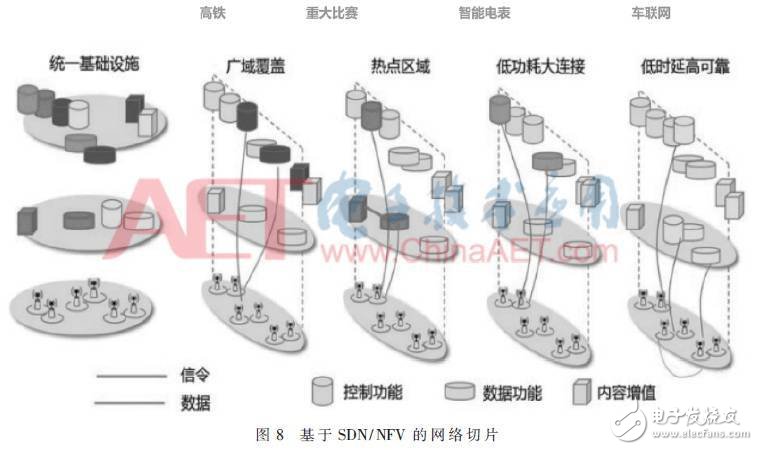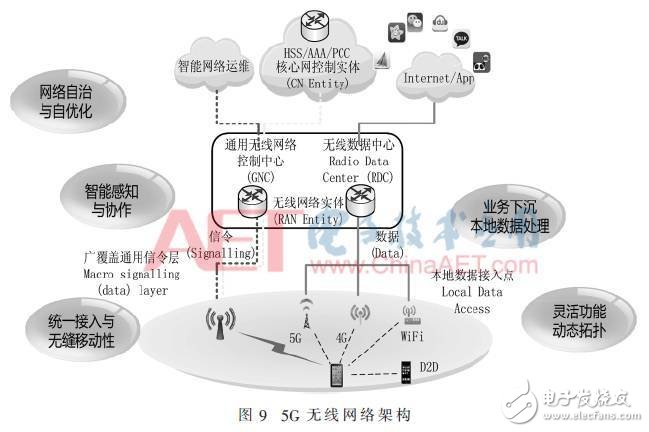The popularity and application of 4G has opened the door for the development of mobile Internet. With the advancement and development of consumer electronics products, mobile communication technology is changing people's lives all the time, and it also stimulates the further development of mobile communication needs. As a mobile communication system for 2020 and beyond, 5G will be applied to all areas of society as an infrastructure to provide a full range of services for the future society and promote transformation and upgrading of all walks of life. To this end, 5G will provide fiber-like access speed, "zero" delay experience, so that information breaks through time and space constraints, for users to present instantly; 5G will provide the connection capacity of 100 billion devices, excellent interactive experience, to achieve Smart interconnection between people and everything; 5G will provide ultra-high traffic density and ultra-high mobility support, allowing users to get consistent performance experience anytime and anywhere; at the same time, more than 100 times energy efficiency improvement and over 100 times lower bit cost will ensure the industry Sustainable development. Ultra-high speed, ultra-low latency, ultra-high mobility, super-connected capacity, ultra-high traffic density, plus energy efficiency and cost improvement over 100 times, 5G will eventually realize the vision of “information to the heart, the tentacles of everything†[1] ]. The immersive mobile Internet and the ubiquitous mobile Internet of Things are the main drivers of 5G development. According to the IMT-2020 (5G) promotion group's forecast [1], global mobile data traffic will grow by more than 200 times between 2010 and 2020, and will increase by nearly 20,000 times between 2010 and 2030, with hot regions growing faster. At the same time, by 2030, the total number of global networked devices, including IoT devices, will reach 100 billion, of which more than 20 billion in China. The 5G application scenario consists of the relevant location and the business that occurred at the location. 5G application scenarios mainly include mobile Internet and mobile Internet of Things. The mobile Internet class can be abstracted into two sub-categories: low mobility and high mobility. The mobile Internet of Things can be abstracted into low-power large connections. Two subclasses with low latency and high reliability are shown in Figure 1. among them: (1) Low-mobility and high-rate application scenarios mainly include offices, dense residential areas, urban hotspots such as CBDs, and large-scale gatherings. The corresponding main services include high-definition video, virtual reality, augmented reality, and cloud storage. The main challenges of this type of application scenario are high speed, high connection density, etc. (2) High mobility and wide coverage application scenarios mainly occur in high-speed rail, expressway, and subway stations where mobility is required. The main services include web browsing, real-time online games, and cloud office. The main challenge lies in Maintain a certain rate of experience with a certain degree of mobility; (3) Low-power and large-connection application scenarios are mainly for sensor applications, including environmental monitoring, intelligent reports, and wearable devices. The main challenge is that the number of connections is large and the power consumption requirements are low; (4) Low-latency and high-reliability application scenarios mainly include automatic control services in the industrial and medical industries, automatic driving in the transportation industry, smart grid, etc. The main challenges are delay and mobility requirements. Based on the analysis of the above four types of scenarios, the overall requirements of 5G can be characterized by the following "5G flower". As shown in Figure 2, the petal represents the six performance indicators of 5G, which reflects the ability of 5G to meet the needs of future diversified business and scenes. The petal apex represents the maximum value of the corresponding indicators, which are reflected as follows: 5G should support 0.1~1 Gb. /s user experience rate, one million connection density per square kilometer, millisecond end-to-end delay, tens of Tb/s traffic density per square kilometer, mobility of more than 500 km per hour and tens of The peak rate of Gb/s. Among them, the user experience rate, the connection number density, and the delay are the three basic performance indicators of 5G. It should be noted that not all performance indicators need to be met at the same time. In addition, the green leaf represents three efficiency indicators, which is the basic guarantee for achieving 5G sustainable development. The specific performance is that compared with 4G, the spectrum efficiency of 5G is increased by 5 to 15 times, and the energy efficiency and cost efficiency are improved by more than 100 times to meet mobile communication. The need for sustainable development of the industry. In order to meet the 5G requirements for the overall transmission efficiency of the system, the 5G air interface needs to adopt a series of new technologies to improve the efficiency of wireless transmission, achieving 3 to 5 times the spectrum efficiency of the 4G system and 1/5 of the existing air interface delay. Wait. 2.1 3D-MIMO (Massive MIMO) As shown in FIG. 3, 3D-MIMO [2] generally adopts a large-scale two-dimensional antenna array, which not only has a large number of antenna ports, but also can flexibly adjust beam directions in horizontal and vertical dimensions to form narrower and more precise directivity. Beam, which greatly enhances the received signal energy of the terminal and enhances cell coverage. However, the traditional 2D-MIMO antenna port number is small, resulting in a wide beam, and the beam direction can only be adjusted in the horizontal dimension, and the vertical dimension energy cannot be concentrated on Terminals, and only distinguishing users in the horizontal dimension, also limit the number of simultaneous users that can be served at the same frequency; 3D-MIMO can make full use of the antenna degrees of freedom of vertical and horizontal dimensions, while users of the same frequency serve more users, greatly The system capacity can be improved, and the coordination of the vertical dimension beam directions of multiple cells can also be achieved, thereby reducing the interference between cells. 3D-MIMO is better at improving the efficiency of receiving and transmitting, improving the number of matched users of multi-user MIMO, or reducing interference between cells. It has better performance than traditional antennas, and is the core of 5G to improve spectrum efficiency. Technology. 2.2 Non-orthogonal multiple access [3] In the face of the higher spectral efficiency, larger capacity, more connections, and lower latency overall requirements proposed in 5H communication, resource utilization of 5G multiple access must be more efficient. Therefore, in the recent 5G research at home and abroad, the non-exclusive user multiple access method of resources has received much attention. In this multiple access mode, the user is exclusive in any resource dimension, so joint detection of multiple user signals must be performed at the receiving end. Thanks to the advancement of chip technology and data processing capabilities, multi-user joint detection at the receiving end has become an implementable solution. The design of 5G new multi-access will start from the most basic modulation mapping module of the physical layer, and introduce hybrid non-orthogonal coding superposition of power domain and code rate, and introduce multi-user joint detection at the receiving end to realize non-orthogonal data layer. Decoding, the unified framework is shown in Figure 4. After the single-user channel coding, the transmitting end enters the core codebook mapping module, including modulation mapping, code domain extension and power optimization. These three parts can also be jointly designed to obtain additional coding gain; the multi-user joint detection is performed at the receiving end. The latter soft information can be input into the decoding module of the single-user error correction coding for decoding, and the result of the channel decoding can be returned to the multi-user joint detector for large iterative decoding, thereby further improving performance. In this general structure diagram, the difference between uplink and downlink multiple access is that the location of the multi-user signal superposition is different. The downlink multi-user signal is superimposed on the transmitting end before the channel is over, and the uplink multi-user signal is after passing through the wireless channel. The receiving end is superimposed. Compared with the physical layer process of 4G OFDMA orthogonal multiple access, the motivation for introducing new module changes in 5G new non-orthogonal multiple access physical layer process mainly includes the following aspects: (1) Through the new (multi-dimensional) modulation mapping design, the coding gain and the shaping gain are obtained, and the access spectrum efficiency is improved; (2) By (sparse) code domain extension, obtaining diversity gain, enhancing transmission robustness, and whitening interference (interference whitening) between intra-cell or inter-cell data streams; (3) Maximize the capacity area of ​​multi-user overlay by power optimization between non-orthogonal layers. 2.3 Self-contained frame structure [4] In order to further reduce the delay of transmission, the 5G system has designed a new design for the structure of the time slot and the feedback of the transmission and reception. For the TDD system, the response time between transmission and feedback is shortened by introducing more uplink and downlink transition points. The design of this frame structure is also called self-contained frame structure. For FDD, the transmission delay can be shortened by a shorter scheduling and transmission cycle. The sub-frame format defined by 5G is shown in Figure 5. This frame structure can greatly shorten the time interval between sending and receiving. For TDD, it can also improve the effective information of uplink channel sounding, and further improve the downlink MIMO transmission and detection efficiency. Thereby improving the spectral efficiency of the system. 2.4 Faster state transition [5] In order to achieve a lower control plane delay, such as 10 ms, 5G introduces a new intermediate state in the existing connected state and idle state of 4G, which is called deactivation state. This state preserves the connection state of the core network, and deletes the connection state of the wireless side. When necessary, the connection of the wireless side can be quickly established, thereby greatly reducing the transition delay from the original idle state to the connected state. The new deactivation state is shown in Figure 6. To support flexible application scenarios and differentiated network capability requirements, 5G needs a more flexible and effective network architecture to meet the needs of future operators for flexible networking and rapid service deployment. The following describes the new technical features of 5G [6]. 3.1 Network architecture of the third cloud layer The existing 4G network structure is single and inflexible, and it is difficult to meet actual deployment requirements such as future 5G multi-scenarios and differentiated QoS requirements. For the future 5G network, the emerging network architecture is designed based on the technology of control and forwarding separation and control function reconstruction, and improves the overall access performance of the access network in the 5G-oriented scenario. Simplify the core network structure, provide flexible and efficient control and forwarding functions, support high-intelligence operations, open network capabilities, and improve the overall service level of the entire network. The extraction and aggregation of control functions facilitates the sensing and scheduling of resources from a global perspective through the network control plane, enabling the programming of network connections. The network architecture of the three clouds is shown in Figure 7. 3.2 Service-Oriented Cloud Network Enable End-to-End Network Slices The biggest feature of the 5G network architecture is that it implements end-to-end network slicing through service-oriented cloud-based networks based on SDN/NFV technology, thereby enabling flexible and rapid deployment of services. At the same time, through the decoupling of hardware and software, the network element function can be conveniently and quickly deployed in any desired location in the network, and the universal hardware resources can be allocated on demand and dynamically scaled to achieve optimal resource utilization. Dynamic, fast, and on-demand deployment of the network is also possible. The network slice based on SDN/NFV is shown in Figure 8. 3.3 User-centric wireless network [7] The 5G network needs to provide the best user representation for the user's behavior, preferences, and the status and capabilities of the terminal and network, and implement a user-centric network, as shown in Figure 9. The main design concepts of the 5G wireless network architecture are as follows: (1) IntelliSense of users and business content Targeting intelligent wireless pipes, by introducing a more refined service and user differentiation mechanism, adaptively configuring air interface technology and system parameters according to service scenarios, user capabilities, user preferences, and network capabilities, to achieve end-to-end fine and diverse Differentiated network connections, services and content differentiation and processing. The 5G network architecture will support the ability to predict, analyze, respond to and process services and users, enable adaptive air interface access and management, and end-to-end fine and diverse service and content differentiation and processing, providing more accurate, More complete user-specific, customized resource configuration and network services to meet diverse user and business needs and ensure a consistent, high-quality user experience. (2) Business sinking and business data localization (MEC) In terms of logic function, based on the functional reconstruction of the core network and the wireless network, the core network is focused on user subscription and policy management and centralized control, while its user plane and service bearer functions continue to sink, business bearer management and business data. Routing and distribution can be deployed on the access network closer to the user, thereby constructing a more optimized service channel, simplifying the routing path of the service, avoiding service bottlenecks, and reducing the load of centralized transmission. At the same time, based on the refined perception of data and business content, the access network can not only generate, map, cache, and distribute data locally, but also implement local distribution and push of services. (3) Support multi-network convergence and multi-connection transmission In the visible time, multiple networks such as 4G/5G/WiFi will coexist for a long time. Therefore, the 5G network architecture must support deep integration of multiple networks to achieve unified and coordinated management of multiple wireless technologies/resources, and based on bearers. Separation from signaling, decoupling between signaling and system, and achieving unified control independent of access mode, maximizing the utilization of radio resources. At the same time, future terminals will also generally have multi-standard multi-wireless simultaneous connection and transmission capabilities. Based on multi-dimensional service acceptance and control, 5G networks will support optimal network matching based on delay tolerance, packet loss sensitivity, and different APP and service providers to support accurate network selection and wireless transmission paths and methods. . 5G paints a beautiful blueprint for the development of mobile communication technology. In order to achieve the ultra-high frequency efficiency, ultra-low latency, ultra-high connection density and ultra-low power consumption required by 5G, 5G needs to make great changes in air interface technology and network architecture, including the introduction of large-scale antennas, non-orthogonal Multiple access, self-contained frame structure, new protocol state, network architecture on the third cloud layer, end-to-end network slicing, new user-centric network technology, etc. Original Elfworld Disposable supplier from china,Elfworld series contain :Elfworld DC5000 ,Elfworld DE6000,Elfworld CAKY 7000,Elfworld TRANS 7500 and so on.Elfworld DC5000 Disposable Device Pen similar Elf Bar ultra 5000.Elfworld DE6000 Modern E-cigarette very fashion style design.Elfworld CAKY 7000 Disposable Vape Pen Stick get good price and beautiful version.Elfworld TRANS 7500 Vape Pen Disposable E Cigarette is the new style now.welcoem contact with us ,get good price and best service . Elfworld DC5000 Ultra ,Elfworld Caky7000 Disposable Vape,Elfworld Disposable Vape,Elfworld DE6000,Elfworld Trans 7500 Shenzhen Ousida Technology Co., Ltd , https://www.osdvape.com